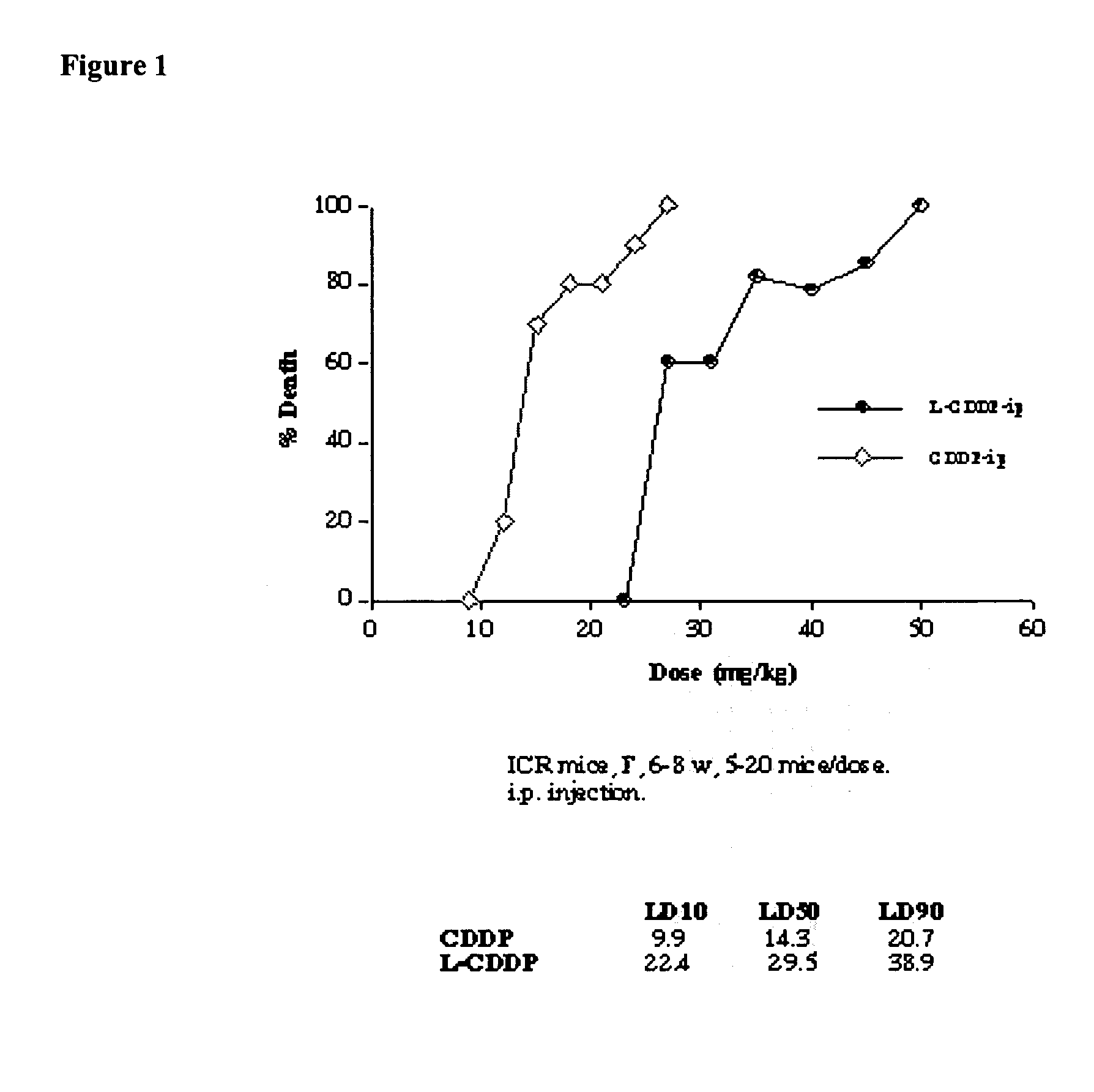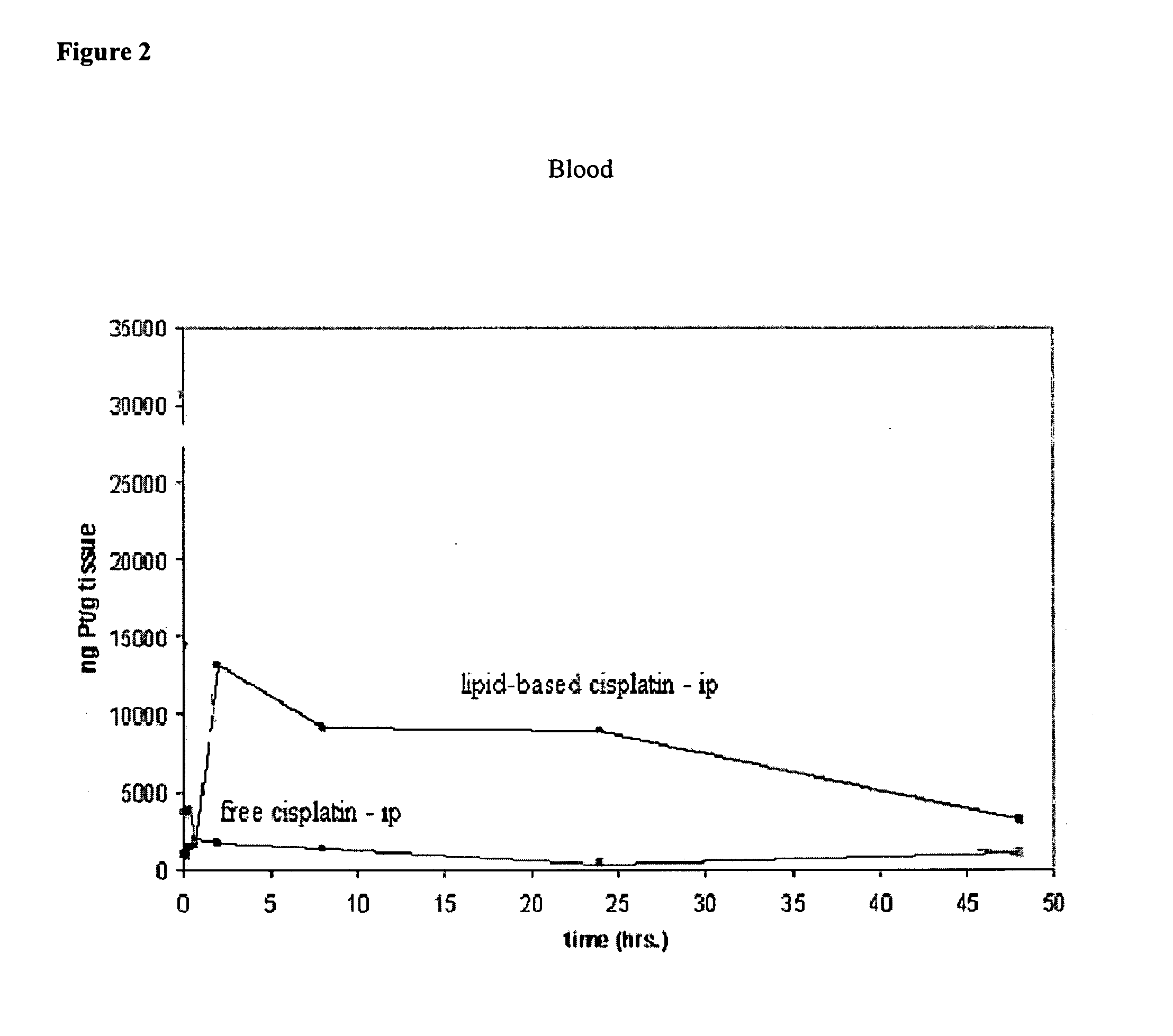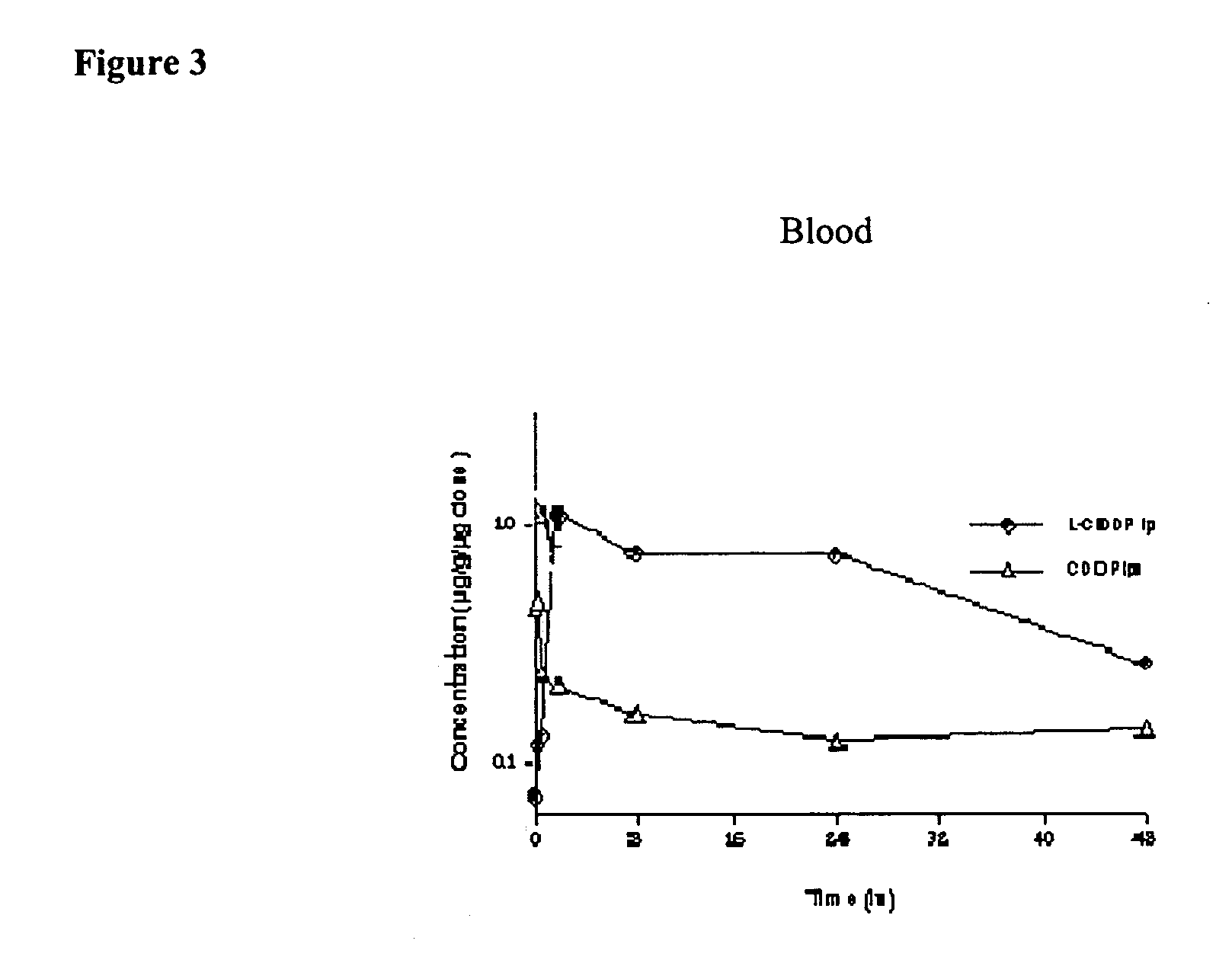Methods of treating cancer with high potency lipid-based platinum compound formulations administered intraperitoneally
- Summary
- Abstract
- Description
- Claims
- Application Information
AI Technical Summary
Benefits of technology
Problems solved by technology
Method used
Image
Examples
example 1
[0102] Method of producing an aqueous cisplatin with higher potency than its aqueous solubility limit at room temperature. [0103] 1) At temperatures about 50-60° C., cisplatin in 0.9% sodium chloride solution at a level of 4 mg / ml and an ethanolic solution of about 16 mg / ml DPPC and 8 mg / ml cholesterol at about 55° C. are aseptically prepared. [0104] 2) The lipid solution is infused into the cisplatin solution while mixing the cisplatin solution. [0105] 3) After infusion, cisplatin / lipid dispersion is cooled down to about 10° C. and then warmed up again to about 50-60° C. for 15 min. [0106] 4) Step 3) is repeated 2-3 times. [0107] 5) The dispersion is aseptically washed with sterile 0.9% sodium chloride solution to remove residual ethanol and un-associated cisplatin via 500,000 MW cut-off membrane diafiltration unit.
[0108] After washing process, the dispersion provides about 1 mg / ml cisplatin potency and concentrated to 3 mg / ml cisplatin and further concentrated to 5 mg / ml cisplati...
example 2
[0109] Comparison of free cisplatin and lipid-based cisplatin formulation at 3 mg / ml cisplatin concentration administered intraperitoneally to rats. Male Sprague-Dawley rats were given free cisplatin at dosages of 6 and 12 mg / kg, and lipid-based cisplatin formulations at 3 mg / ml at dosages of 6, 12, and 18 mg / kg intraperitoneally. Control groups comprised 6 rats and groups for the test articles comprised 3 rats per group. Observation of morbidity / mortality were conducted daily as were weight measurements. Results are presented in Table 1.
TABLE 1Rat study lethality summary for 3 mg / mllipid-based cisplatin formulation.Number Dead / Day ofTreatment Group / DosageNumber TreatedDeathGroup 1 - Control (no treatment)0 / 6Group 2 - 6 mg / kg lipid-based0 / 3cisplatin formulationGroup 3 - 12 mg / kg lipid-based1 / 313cisplatin formulationGroup 4 - 18 mg / kg lipid-based1 / 38cisplatin formulation
example 3
[0110] Reduction of sub-acute toxicity of cisplatin by iv or ip administration when administered as a lipid-based formulation. ICR mice, male and female, 6-7 weeks old, were divided into 24 groups with 10 mice in each. Five mice were housed in each cage with free access to standard mouse food and water. Each group of mice was injected with lipid-based cisplatin formulations prepared according to the following. The lipid-based cisplatin formulation used here contained 1 mg / ml cisplatin, 16 mg / ml DPPC, and 7.9 mg / ml cholesterol in 0.9% NaCl solution. An aliquot (50%) of the sample was treated by 3 cycles of cooling to 4° C. and warming to 50° C. The aliquot, in a test tube, was cooled by refrigeration, and heated in a water bath. The resulting unentrapped cisplatin (free cisplatin) was washed away by dialysis. The lipid-based cisplatin in the form of liposomes were injected through iv (tail vein) or ip route. The liposomes had a mean diameter of about 0.39 μm. The formulations, doses,...
PUM
| Property | Measurement | Unit |
|---|---|---|
| Time | aaaaa | aaaaa |
| Diameter | aaaaa | aaaaa |
| Diameter | aaaaa | aaaaa |
Abstract
Description
Claims
Application Information
 Login to View More
Login to View More - R&D
- Intellectual Property
- Life Sciences
- Materials
- Tech Scout
- Unparalleled Data Quality
- Higher Quality Content
- 60% Fewer Hallucinations
Browse by: Latest US Patents, China's latest patents, Technical Efficacy Thesaurus, Application Domain, Technology Topic, Popular Technical Reports.
© 2025 PatSnap. All rights reserved.Legal|Privacy policy|Modern Slavery Act Transparency Statement|Sitemap|About US| Contact US: help@patsnap.com



